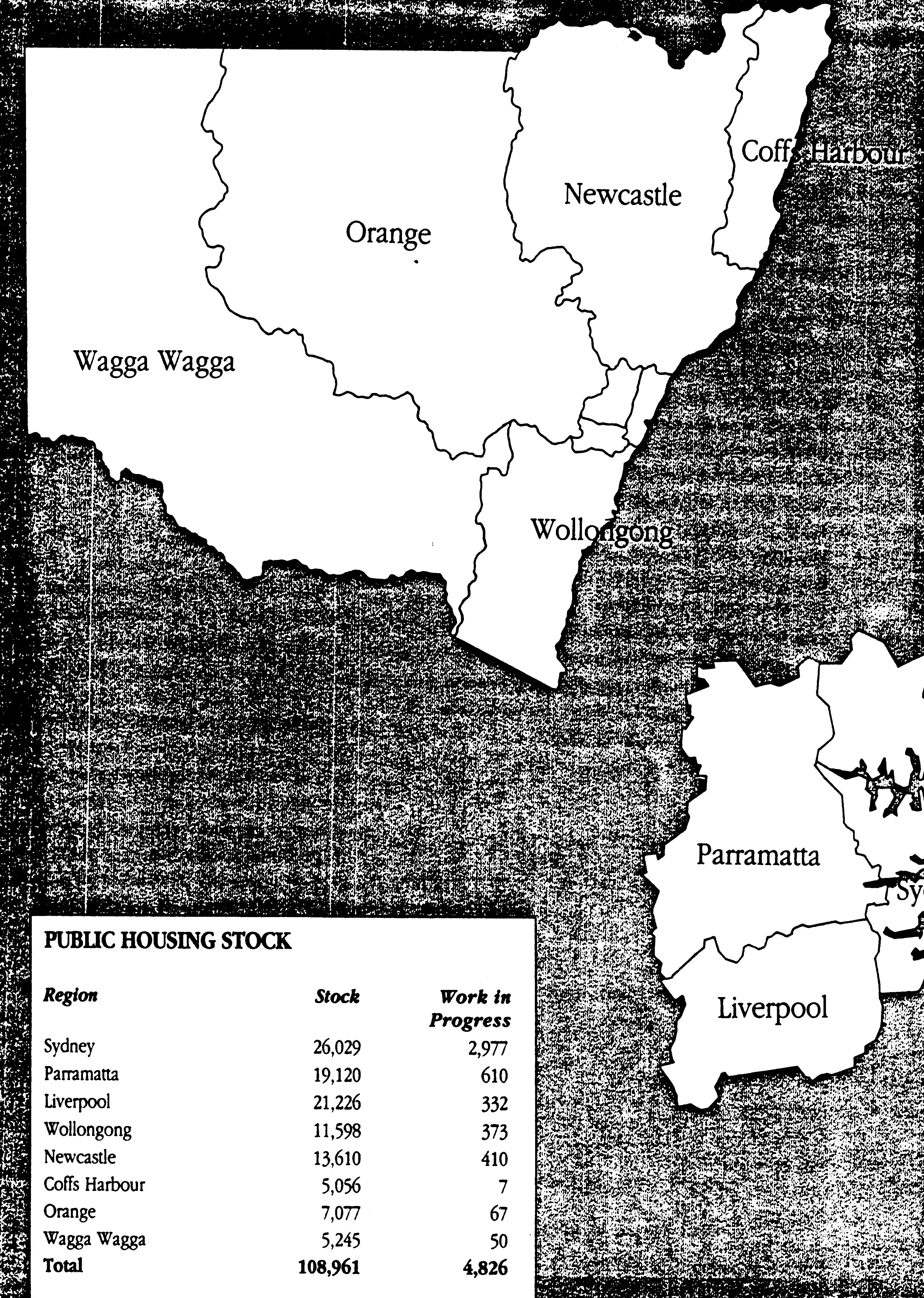- Housing (Amendment) Act 1985
- Land Commission (Housing) Amendment Act 1985
- Public Authorities (Financial Accommodation) (Housing) Amendment Act 1985.
- Public Finance and Audit (Housing) Amendment Act 1985.
- To maximise the opportunities for all people in NSW to have access to secure, appropriate and affordable housing.
- To ensure that housing opportunities and assistance are available to all sections of the community with housing needs.
- To ensure that public housing is developed as a viable and diverse form of housing choice.
- To ensure that public housing reflects general community housing standards and is designed to cater for the ongoing needs of consumers.
- To maximise the opportunities for tenants of public and community housing programs to participate in the management of their housing and in the development of public and community housing policies.
- To promote equity between levels of assistance provided to people living in public rental housing and those who own or are purchasing their own homes.
- To maintain an efficient housing administration to ensure the effective coordination and provision of all housing services.
- To encourage social mix and the integration of different housing forms in existing and new communities.
- To encourage the planning and development of new urban areas as communities with a full range of appropriate services and facilities available in the shortest practicable time.
- To promote a viable and stable building and construction industry in the residential sector
- To facilitate the provision of an adequate supply of affordable home finance for persons in receipt of low and moderate incomes.
- To encourage the development of flexible and innovative financial arrangements to facilitate access to home ownership for persons in receipt of low to moderate incomes.
- To ensure appropriate mechanisms and forms are established to allow input into housing policy by representative community organisations and non government agencies involved in housing policy and provision.
The tenant participation program increased with the number of tenant groups doubling from 70 to more than 150 and the formation of regional public tenants councils in all the Department's 8 regions. Further, greater public participation through community schemes. A dramatic increase in capital funding for the Community Tenancy Scheme with a record $12.5m being allocated to the purchase of 190 dwellings. Public housing departments are more concerned with the needs of disadvantaged groups.
In NSW the department purchases homes under the Disability Housing Program and renovates them to meet specific needs of people with disabilities.
EXAMPLE HOUSING FOR OLDER PEOPLE
The department built the Dougherty Apartments housing project at Chatswood, a joint venture development of 137 units and a private joint development of a 60 bed hostel at Canterbury built to a congregate pattern to allow groups of older people both private living space and common facilities together with livein support staff.
PRIORITY AND CRISIS HOUSING ALLOCATIONS
Another growing area of public housing is crisis housing for example, in 1986/7, 2 013 allocations were approved for priority and crisis housing, about 16.5% of all allocations. This is less than the previous years high of 2 752.
